site search
online catalog
RARE CONFEDERATE READ AND WATSON FIRST-TYPE CONVERSION HALL RIFLE

Hover to zoom

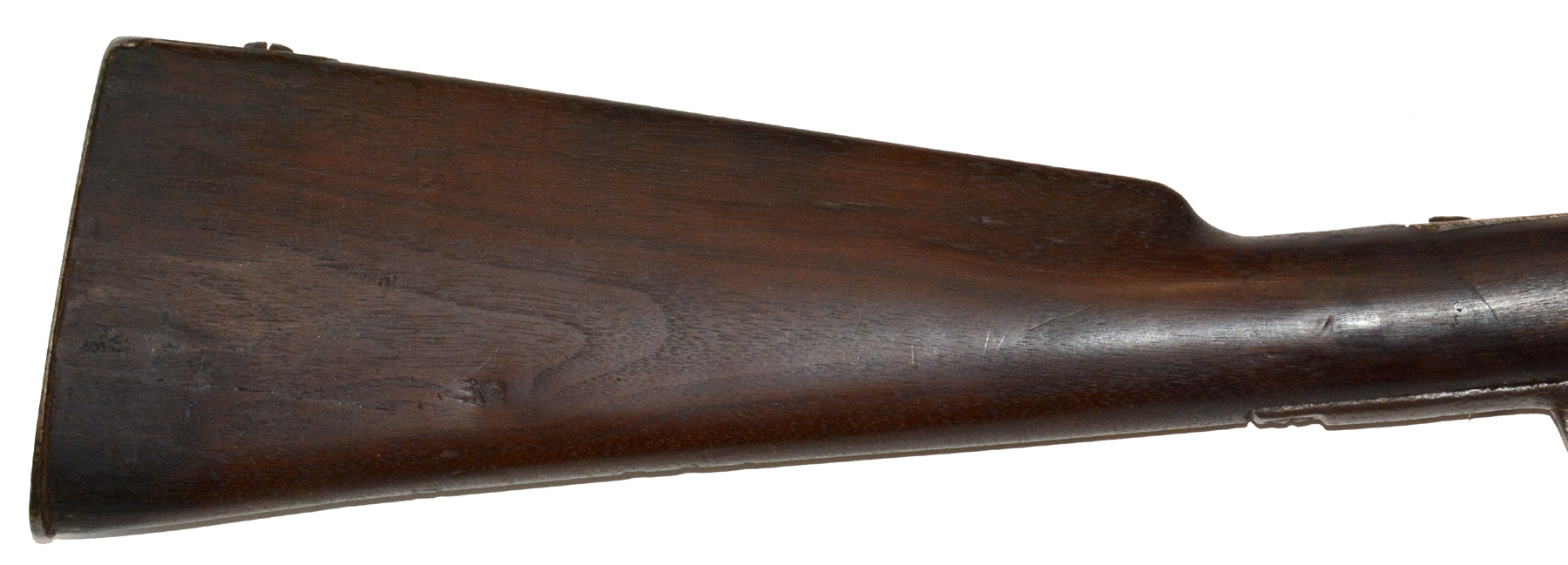



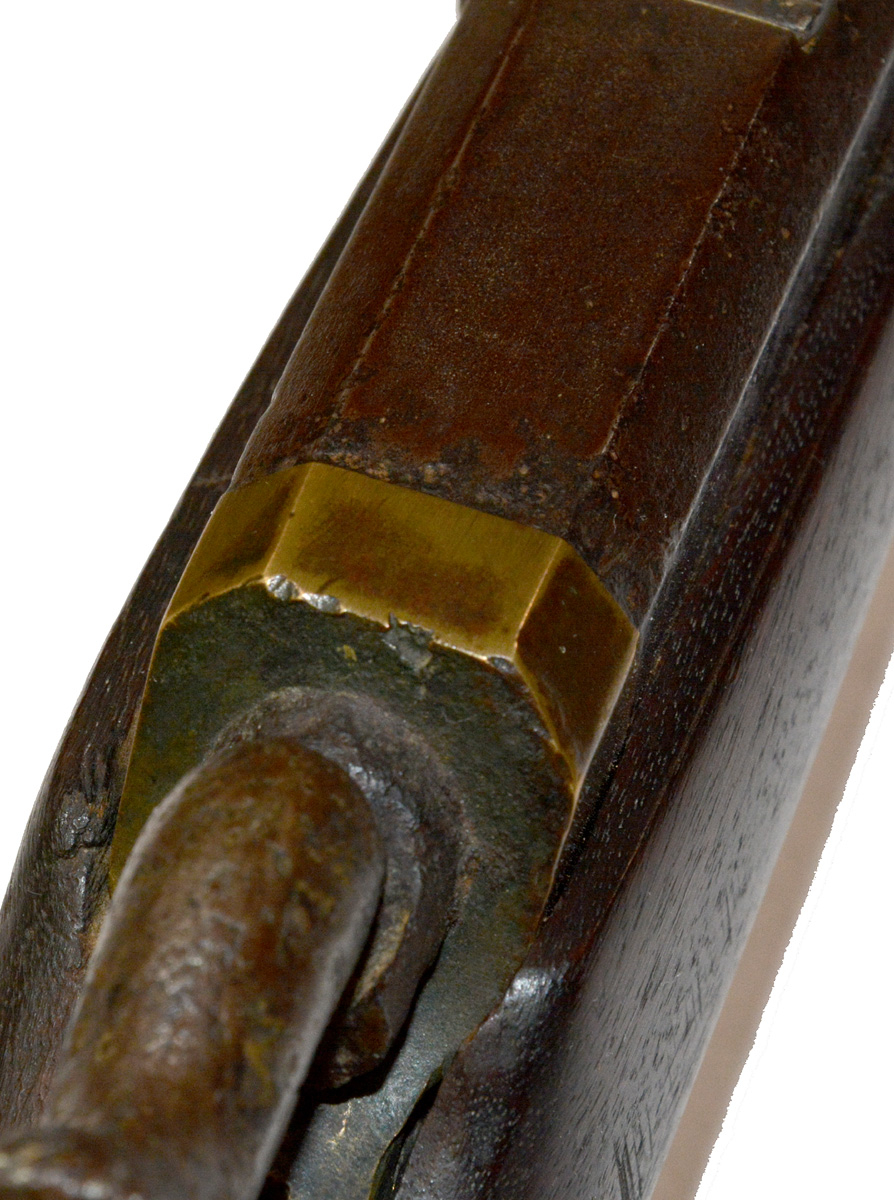
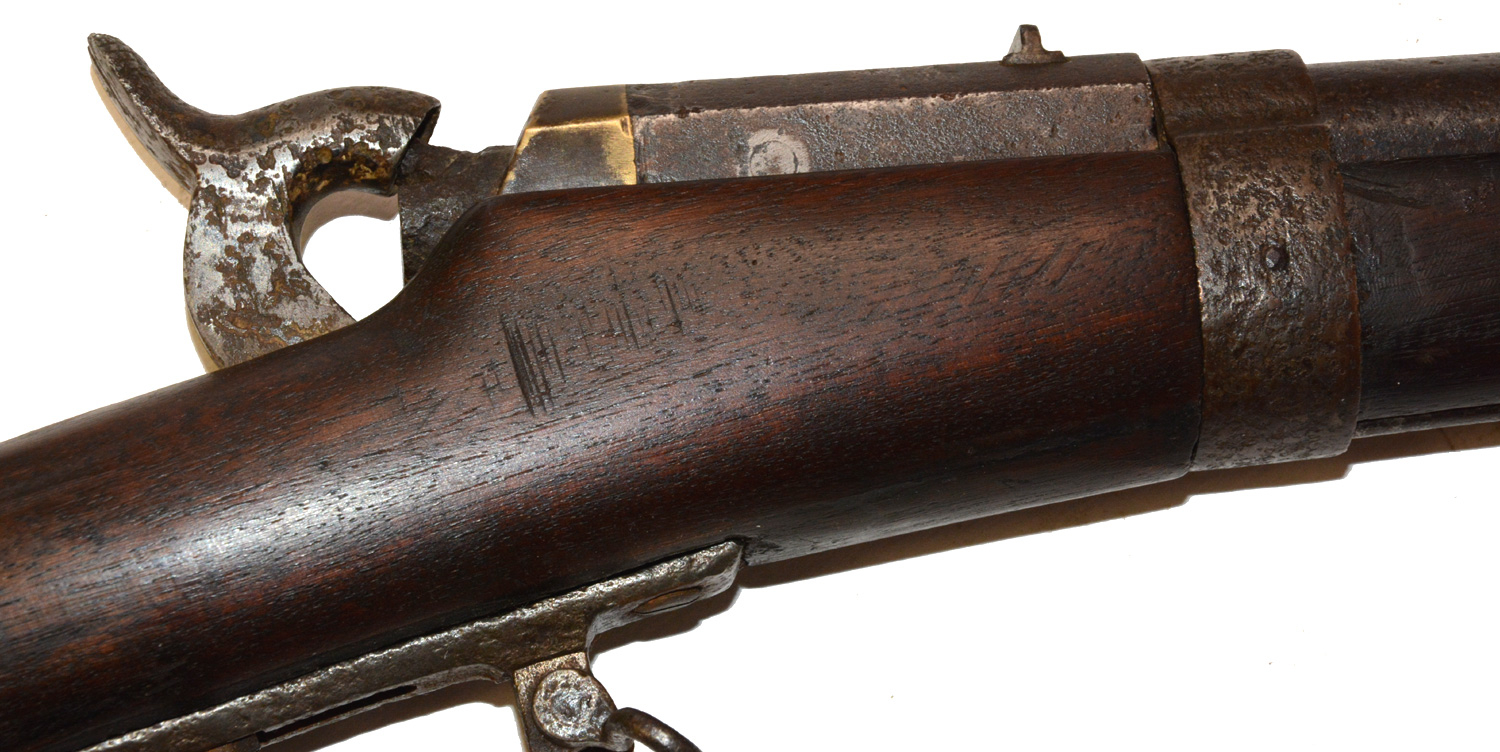


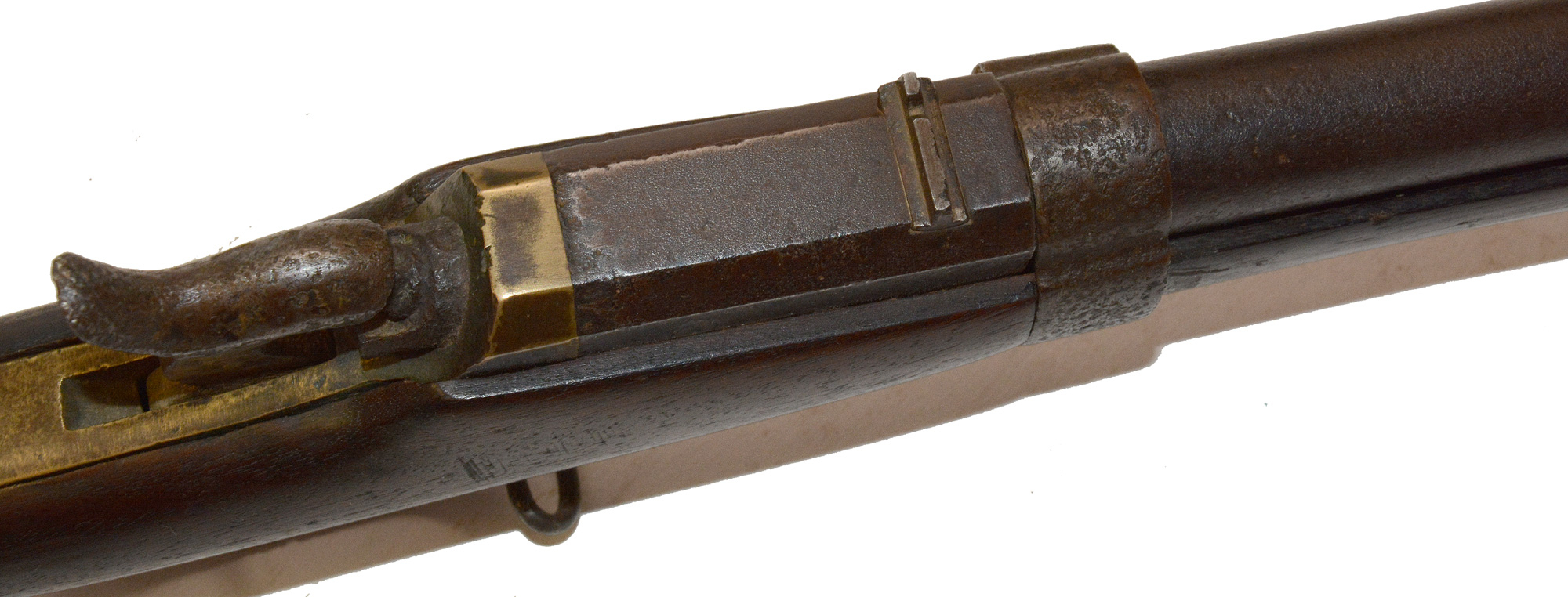
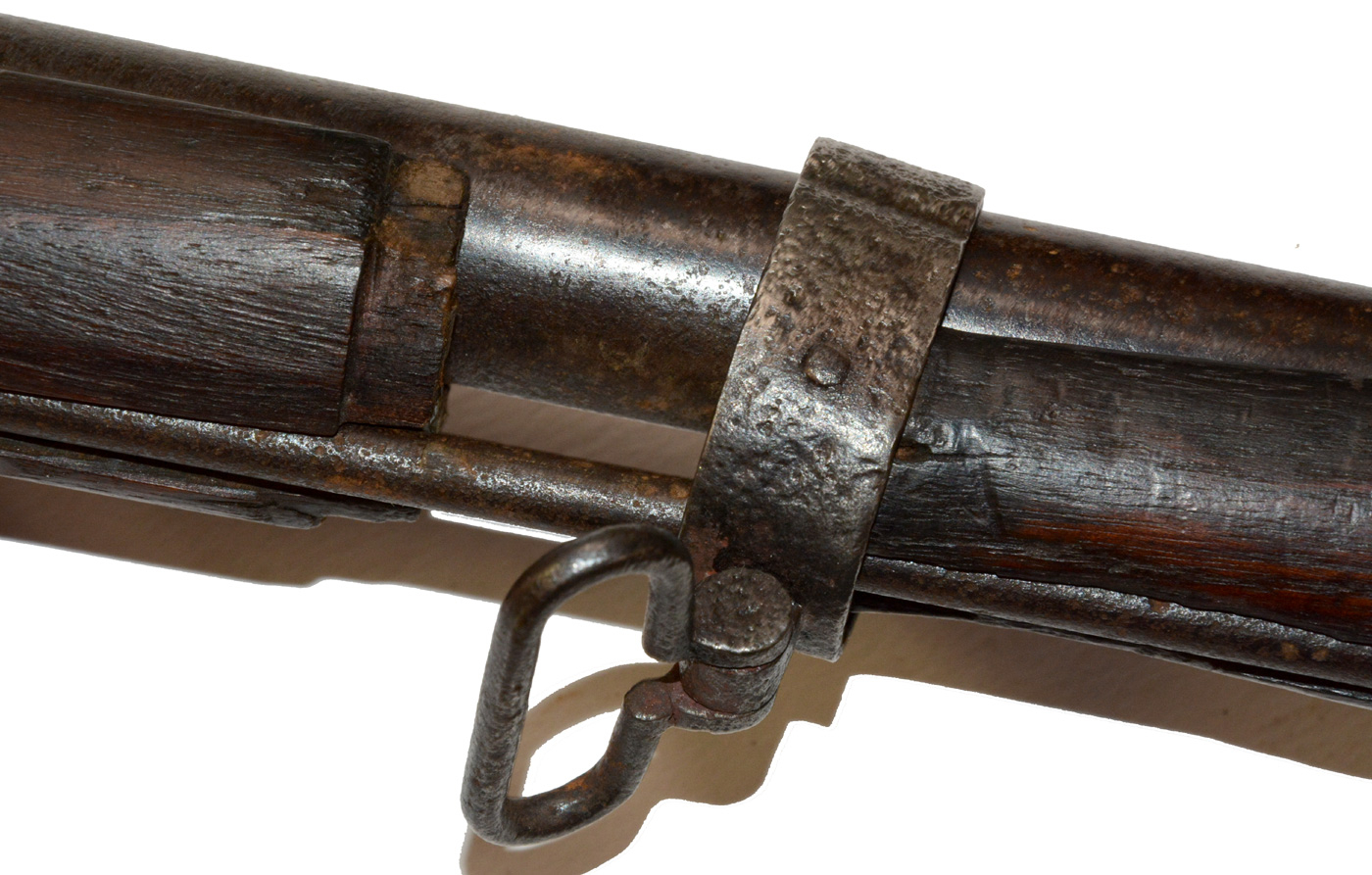

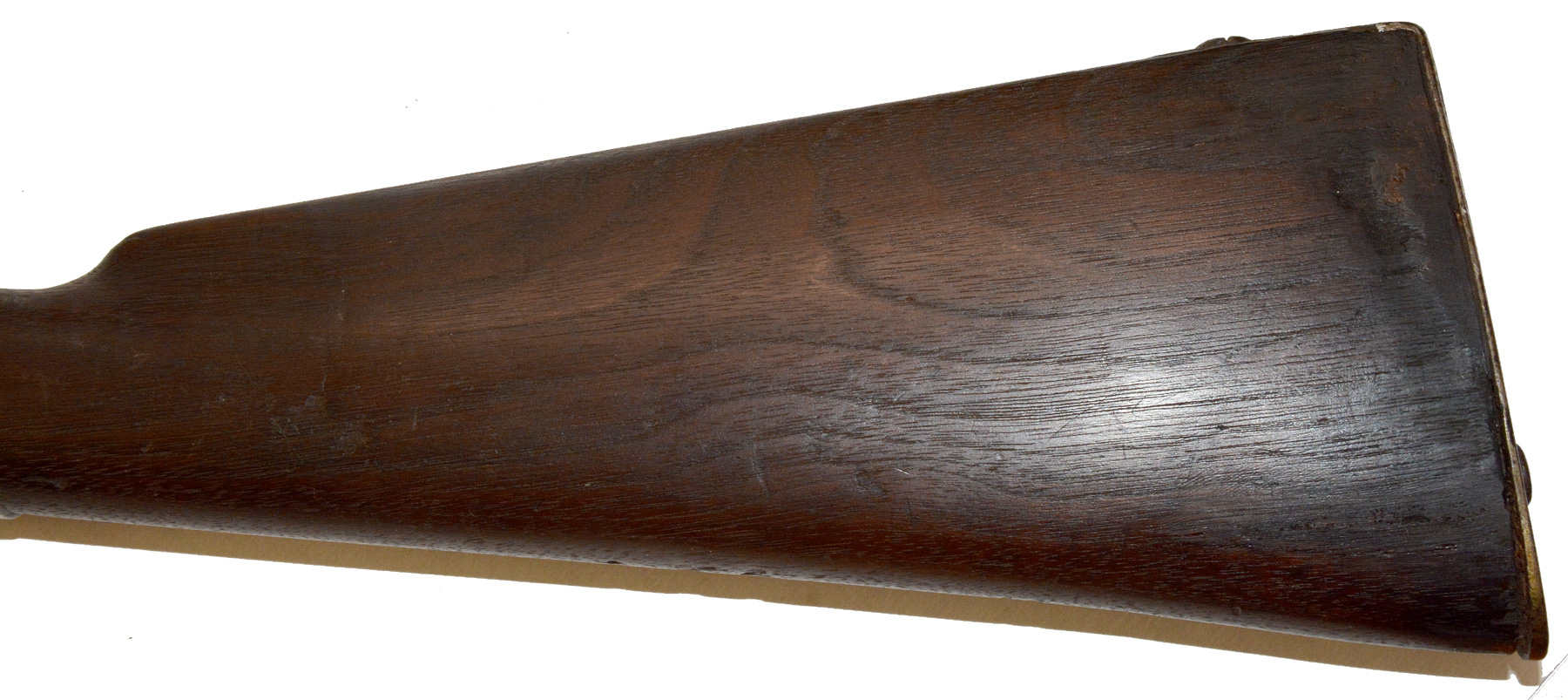
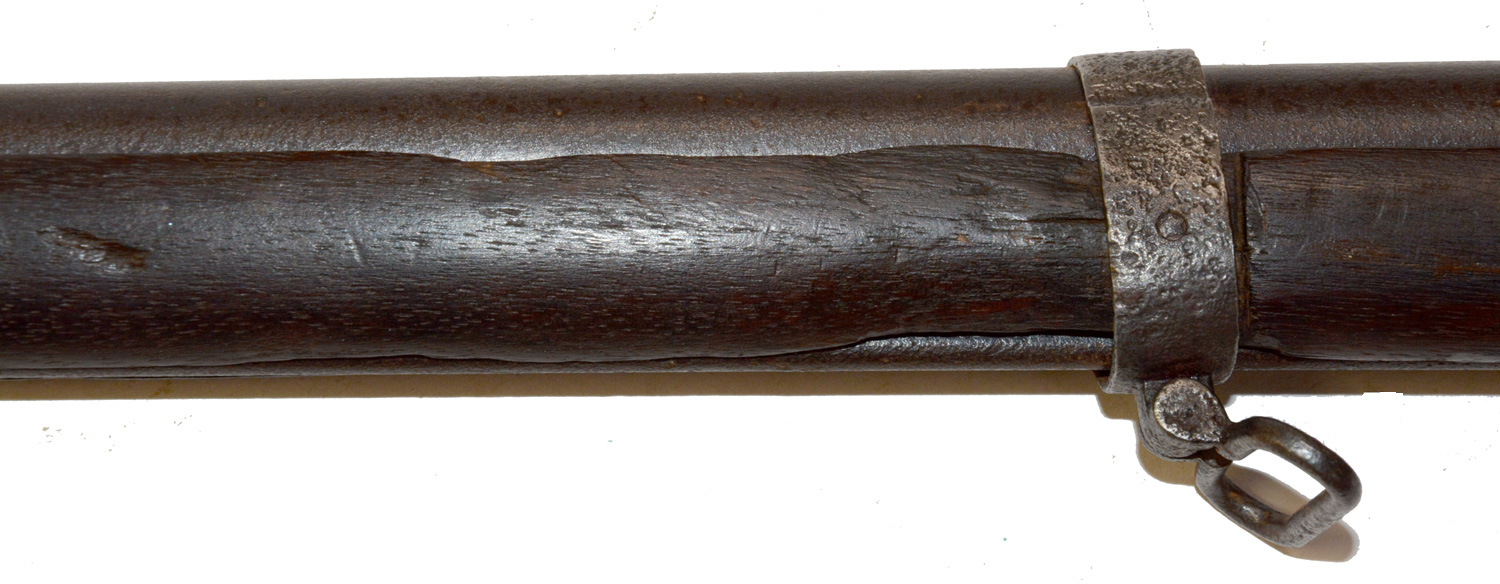
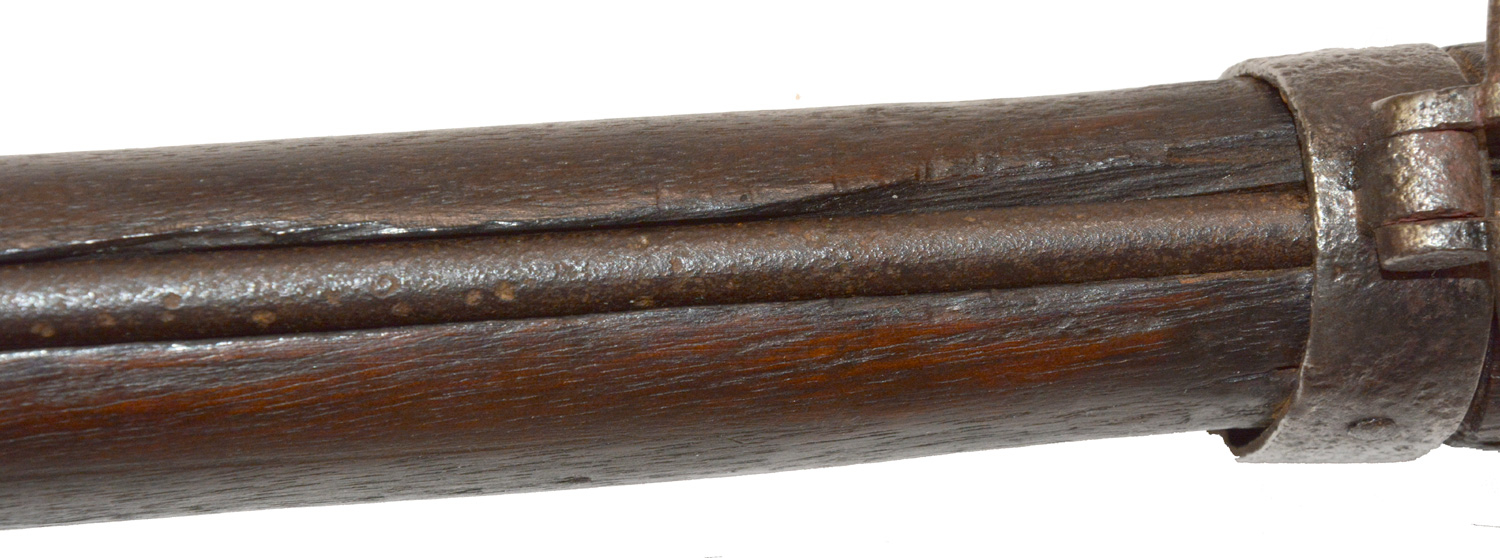
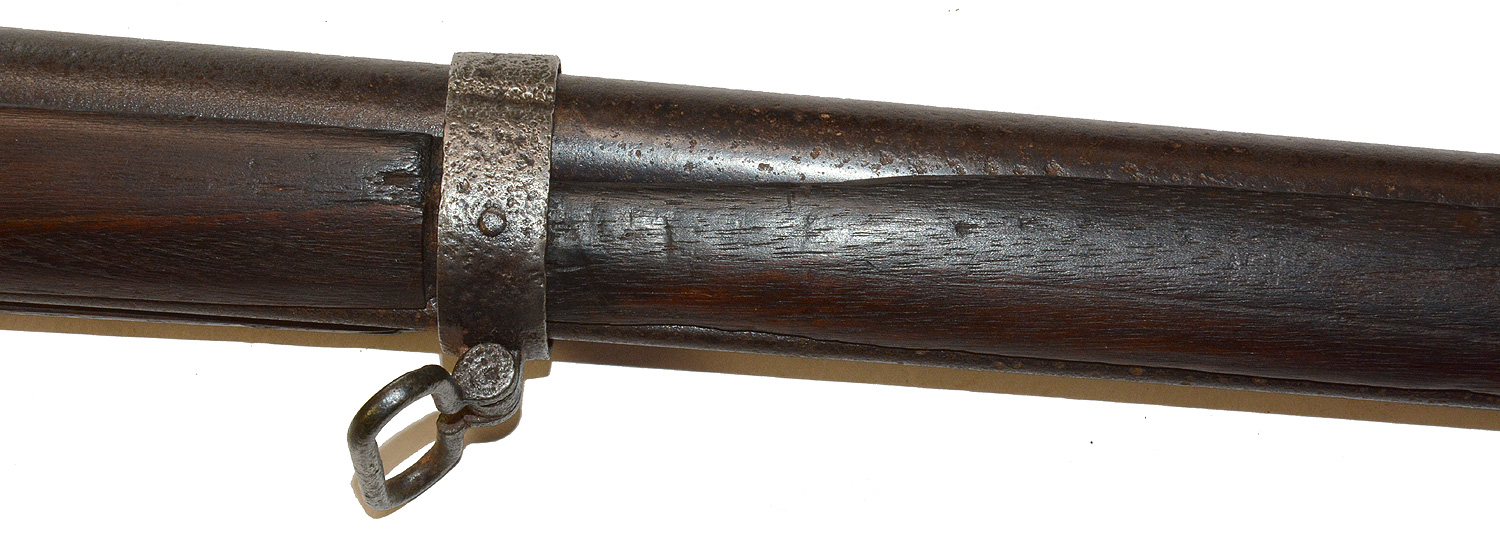

$7,250.00 SOLD
Quantity Available: None
Item Code: 172-5738
This is an extremely rare Confederate rifle made from 1862-1863 by the firm of Read and Watson in Danville, Virginia, by altering a .52 caliber Hall M1819 breechloading rifle to a percussion muzzle-loader. Virginia had acquired 1,000 of these rifles from 1836 to 1838 (and an equal number of carbines) from the U.S. government under the terms of the 1808 militia act. Existing payment vouchers from May 1862 to September 1863 show the state paid Read and Watson for converting roughly 900-1,000 Halls. Most were apparently the rifles.
The conversion re-used parts salvaged from the original guns, but involved removing the breechblock and cutting the frame supports to insert a new brass receiver mounting a vent, nipple in a flash-shield, and a centrally hung percussion hammer. This necessitated a new stock, but in addition to re-using the iron mounts of the gun, Read and Watson also re-used the upper half of the forestock, splicing it to their new stock with an iron staple hidden behind the remounted barrel band.
This is one of their First-Type conversions, using a shorter breech piece and thinner brass tang, where the later versions have a longer and far bulkier receiver and tang. The has a very nice buttstock with good surface and color, and good fit. The stock shows just one small check on the lower right butt flat and a very well repaired hairline on the wrist angling forward from the rear of the receiver tang. The underside of the stock is stamped “H76,” with seems a Read and Watson alpha-numeric code rather than a unit number. The ramrod channel is good, with no large nicks or missing slivers.
The barrel is brown and shows shallow pitting, but is very good overall, especially for a Confederate arm. Both sights are in place, including the rear sight offset to the left to accommodate the center-hung hammer (characteristic of the original configuration as well.) The iron mounts, including buttplate, barrel bands, swivels, and ramrod are in place and show gray with deep pitting, but are original to the gun. The nipple and flash shield show brown and corrosion. The hammer shows gray mixed with some brown and shallow pitting, but the checkering of the thumbpiece is very evident and the mechanics are good.
These are numbered on the underside of the receiver, but we have not taken the gun apart to note the number. The only significant defect we see is that the upper Hall portion of the forestock has parted from the lower Read and Watson portion precisely at the join made by the iron staple under the middle barrel band. It might be repaired, but since it so well illustrates the inherent weakness of the design, we think it should be left as is. The upper rear of the Hall portion shows some wear along the barrel, but with the band in place the join is not noticeable, just as Read and Watson intended.
Converting a breechloader to a muzzleloader seems a technological step backward. When invented, Halls were faster to load than rifles or even muskets, and his manufacture by machined was faster, cost less, and offered the prospect of interchangeable parts. Gas leaks from breech and through the trigger mortise, however, along with the difficulty of cleaning and risk of the stock exploding from powder build-up, gave them a bad reputation. Priming powder piling up in the straight vertical vent also acted like a fuse when the trigger was pulled, delaying ignition and throwing off the shooter’s aim. It’s no surprise then that the U.S. Model 1841 rifle went back to muzzle-loading, and in that light Read and Watson’s conversions make perfect sense as serviceable, if not the most elegant, rifles.
These rifles are known to have seen service in the hands of units of the Virginia State Line, five regiments of which were posted to secure the western counties of the state and commanded by John B. Floyd, with headquarters at Wytheville. Among the arms issued to his troops were 405 “Reads rifles.” Other units likely received them as well. This particular example also has an excellent provenance, formerly being in the George Wray collection and is pictured on pages 288-289 of Confederate Odyssey, making it literally, “the one in the book.” This is a seldom-offered opportunity to a acquire a rare Confederate rifle. [sr] [ph:L]
DISCLAIMER: All firearms are sold as collector's items only - we do not accept responsibility as to the shooting safety or reliability of any antique firearm. All firearms are described as accurately as possible, given the restraints of a catalog listing length. We want satisfied customers & often "under" describe the weapons. Any city or state regulations regarding owning antique firearms are the responsibility of the purchaser. All firearms are "mechanically perfect" unless noted, but again, are NOT warranted as safe to fire.
~~~~~~~~~~~~~~~~~~~~~~~~~~~~~~~~~~~
THIS ITEM, AS WITH ALL OTHER ITEMS AVAILABLE ON OUR WEB SITE,
MAY BE PURCHASED THROUGH OUR LAYAWAY PROGRAM.
FOR OUR POLICIES AND TERMS,
CLICK ON ‘CONTACT US’ AT THE TOP OF ANY PAGE ON THE SITE,
THEN ON ‘LAYAWAY POLICY’.
THANK YOU!
Inquire About RARE CONFEDERATE READ AND WATSON FIRST-TYPE CONVERSION HALL RIFLE
Most Popular
Historical Firearms Stolen From The National Civil War Museum In Harrisburg, Pa »
Theft From Gravesite Of Gen. John Reynolds »
Selection Of Unframed Prints By Don Troiani »
Fine Condition Brass Infantry Bugle Insignia »
featured item
WONDERFUL CONDITION ORIGINAL CONFEDERATE-MANUFACTURED KEPI FOR A DRUMMER BOY OR CHILD
This article of uniform clothing is an original, Civil War example of headgear manufactured in the Confederacy and presented here in wonderful, original intact condition. The period artifact is a small, dark blue colored, wool kepi, suited for a… (526-68). Learn More »


